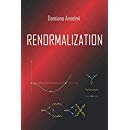I show that under certain conditions it is possible to define consistent irrelevant deformations of interacting conformal field theories. The deformations are finite or have a unique running scale (“quasi-finite”). They are made of an infinite number of lagrangian terms and a finite number of independent parameters that renormalize coherently. The coefficients of the irrelevant terms are determined imposing that the beta functions of the dimensionless combinations of couplings vanish (“quasi-finiteness equations”). The expansion in powers of the energy is meaningful for energies much smaller than an effective Planck mass. Multiple deformations can be considered also. I study the general conditions to have non-trivial solutions. As an example, I construct the Pauli deformation of the IR fixed point of massless non-Abelian Yang-Mills theory with $N_c$ colors and $N_f \lesssim 11N_c/2$ flavors and compute the couplings of the term $F^3$ and the four-fermion vertices. Another interesting application is the construction of finite chiral irrelevant deformations of $N=2$ and $N=4$ superconformal field theories. The results of this paper suggest that power-counting non-renormalizable theories might play a role in the description of fundamental physics.
JHEP 0310 (2003) 045 | DOI: 10.1088/1126-6708/2003/10/045
arXiv:hep-th/0309251
As it stands, quantum gravity coupled with matter in three spacetime dimensions is not finite. In this paper I show that an algorithmic procedure that makes it finite exists, under certain conditions. To achieve this result, gravity is coupled with an interacting conformal field theory $C$. The Newton constant and the marginal parameters of $C$ are taken as independent couplings. The values of the other irrelevant couplings are determined iteratively in the loop- and energy-expansions, imposing that their beta functions vanish. The finiteness equations are solvable thanks to the following properties: the beta functions of the irrelevant couplings have a simple structure; the irrelevant terms made with the Riemann tensor can be reabsorbed by means of field redefinitions; the other irrelevant terms have, generically, non-vanishing anomalous dimensions. The perturbative expansion is governed by an effective Planck mass that takes care of the interactions in the matter sector. As an example, I study gravity coupled with Chern-Simons $U(1)$ gauge theory with massless fermions, solve the finiteness equations and determine the four-fermion couplings to two-loop order. The construction of this paper does not immediately apply to four-dimensional quantum gravity.
Nucl.Phys. B687 (2004) 124-142 | DOI: 10.1016/j.nuclphysb.2004.03.024
arXiv:hep-th/0309250
In three spacetime dimensions, where no graviton propagates, pure gravity is known to be finite. It is natural to inquire whether finiteness survives the coupling with matter. Standard arguments ensure that there exists a subtraction scheme where no Lorentz-Chern-Simons term is generated by radiative corrections, but are not sufficiently powerful to ensure finiteness. Therefore, it is necessary to perform an explicit (two-loop) computation in a specific model. I consider quantum gravity coupled with Chern-Simons U(1) gauge theory and massless fermions and show that renormalization originates four-fermion divergent vertices at the second loop order. I conclude that quantum gravity coupled with matter, as it stands, is not finite in three spacetime dimensions.
Nucl.Phys. B687 (2004) 143-160 | DOI: 10.1016/j.nuclphysb.2004.03.023
I study some aspects of the renormalization of quantum field theories with infinitely many couplings in arbitrary space-time dimensions. I prove that when the space-time manifold admits a metric of constant curvature the propagator is not affected by terms with higher derivatives. More generally, certain lagrangian terms are not turned on by renormalization, if they are absent at the tree level. This restricts the form of the action of a non-renormalizable theory, and has applications to quantum gravity. The new action contains infinitely many couplings, but not all of the ones that might have been expected. In quantum gravity, the metric of constant curvature is an extremal, but not a minimum, of the complete action. Nonetheless, it appears to be the right perturbative vacuum, at least when the curvature is negative, suggesting that the quantum vacuum has a negative asymptotically constant curvature. The results of this paper give also a set of rules for a more economical use of effective quantum field theories and suggest that it might be possible to give mathematical sense to theories with infinitely many couplings at high energies, to search for physical predictions.
Class.Quant.Grav. 20 (2003) 2355-2378 | DOI: 10.1088/0264-9381/20/11/326
I discuss several issues about the irreversibility of the RG flow and the trace anomalies $c$, $a$ and $a’$. First I argue that in quantum field theory: $i$) the scheme-invariant area $\Delta a’$ of the graph of the effective beta function between the fixed points defines the length of the RG flow; $ii$) the minimum of $\Delta a’$ in the space of flows connecting the same UV and IR fixed points defines the (oriented) distance between the fixed points; $iii$) in even dimensions, the distance between the fixed points is equal to $\Delta a =a_{UV}-a_{IR}$. In even dimensions, these statements imply the inequalities $0 \leq \Delta a \leq \Delta a’$ and therefore the irreversibility of the RG flow. Another consequence is the inequality $a \leq c$ for free scalars and fermions (but not vectors), which can be checked explicitly. Secondly, I elaborate a more general axiomatic set-up where irreversibility is defined as the statement that there exist no pairs of non-trivial flows connecting interchanged UV and IR fixed points. The axioms, based on the notions of length of the flow, oriented distance between the fixed points and certain “oriented-triangle inequalities”, imply the irreversibility of the RG flow without a global a function. I conjecture that the RG flow is irreversible also in odd dimensions (without a global a function). In support of this, I check the axioms of irreversibility in a class of $d=3$ theories where the RG flow is integrable at each order of the large $N$ expansion.
Class.Quant.Grav. 21 (2004) 29-50 | DOI: 10.1088/0264-9381/21/1/003
I study some classes of RG flows in three dimensions that are classically conformal and have manifest $g \rightarrow 1/g$ dualities. The RG flow interpolates between known (four-fermion, Wilson-Fischer, $\phi_3^6$) and new interacting fixed points. These models have two remarkable properties: $i$) the RG flow can be integrated for arbitrarily large values of the couplings g at each order of the $1/N$ expansion; $ii$) the duality symmetries are exact at each order of the $1/N$ expansion. I integrate the RG flow explicitly to the order ${\cal O}(1/N)$, write correlators at the leading-log level and study the interpolation between the fixed points. I examine how duality is implemented in the regularized theory and verified in the results of this paper.
Nucl.Phys. B658 (2003) 440 | DOI: 10.1016/S0550-3213(03)00174-3
I review my explanation of the irreversibility of the renormalization-group flow in even dimensions greater than two and address new investigations and tests.
I study various properties of the critical limits of correlators containing insertions of conserved and anomalous currents. In particular, I show that the improvement term of the stress tensor can be fixed unambiguously, studying the RG interpolation between the UV and IR limits. The removal of the improvement ambiguity is encoded in a variational principle, which makes use of sum rules for the trace anomalies $a$ and $a’$. Compatible results follow from the analysis of the RG equations. I perform a number of self-consistency checks and discuss the issues in a large set of theories.
J.Math.Phys. 43 (2002) 2965-2977 | DOI: 10.1063/1.1475766
I derive a procedure to generate sum rules for the trace anomalies $a$ and $a’$. Linear combinations of $\Delta a = a_{UV}-a_{IR}$ and $\Delta a’ = a’_{UV}-a’_{IR}$ are expressed as multiple flow integrals of the two-, three- and four-point functions of the trace of the stress tensor. Eliminating $\Delta a’$, universal flow invariants are obtained, in particular sum rules for $\Delta a$. The formulas hold in the most general renormalizable quantum field theory (unitary or not), interpolating between UV and IR conformal fixed points. I discuss the relevance of these sum rules for the issue of the irreversibility of the RG flow. The procedure can be generalized to derive sum rules for the trace anomaly $c$.
JHEP 0111:033 (2001) | DOI: 10.1088/1126-6708/2001/11/033
A flow invariant is a quantity depending only on the UV and IR conformal fixed points and not on the flow connecting them. Typically, its value is related to the central charges a and c. In classically-conformal field theories, scale invariance is broken by quantum effects and the flow invariant $a_{UV}-a_{IR}$ is measured by the area of the graph of the beta function between the fixed points. There exists a theoretical explanation of this fact. On the other hand, when scale invariance is broken at the classical level, it is empirically known that the flow invariant equals $c_{UV}-c_{IR}$ in massive free-field theories, but a theoretical argument explaining why it is so is still missing. A number of related open questions are answered here. A general formula of the flow invariant is found, which holds also when the stress tensor has improvement terms. The conditions under which the flow invariant equals $c_{UV}-c_{IR}$ are identified. Several non-unitary theories are used as a laboratory, but the conclusions are general and an application to the Standard Model is addressed. The analysis of the results suggests some new minimum principles, which might point towards a better understanding of quantum field theory.
Class.Quant.Grav. 18 (2001) 4417-4442 | DOI: 10.1088/0264-9381/18/21/304

 Quantum Gravity
Quantum Gravity 


